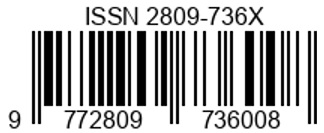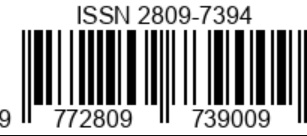PEMBERDAYAAN PEREMPUAN BERBASIS INOVASI PENGELOLAAN KAIN TENUN MELALUI EKONOMI KREATIF SEBAGAI DAYA TARIK WISATA DI DESA PRINGGASELA SELATAN, KABUPATEN LOMBOK TIMUR, NTB
Abstract
This study discusses the empowerment of women in managing woven fabrics through creative economy in Pringgasela Selatan Village. The research results are described in several answers to the research focus, namely regarding the constraints and efforts to empower women. The approach used is descriptive qualitative. Data collection techniques were carried out by observation, interviews and documentation techniques to obtain primary data and secondary data. Data analysis techniques consist of three flows of activities with discussion of descriptive analysis, namely: data reduction (data reduction), data presentation (data display), and drawing conclusions or verification (verification). The results showed that the constraints faced by weavers in managing woven fabrics included human resources (HR), facilities and infrastructure constraints, institutional constraints and marketing constraints. Efforts to empower include human resource management (HR), fulfillment of facilities and infrastructure, efforts to improve institutions and efforts to improve marketing. The emergence of a new potential that can become the branding of South Pringgasela Village is the discovery of the potential for woven fabric, namely Rerempek Woven Cloth which has its own uniqueness and characteristics.
References
[2] Claros, Augusto Lopez dan Zahidi, Saadia. (2005). Woman Empowerment: Measuring the Global Gender Gap. World Economic Forum. Diakses dari situs: www.weforum.org
[3] Hasibuan, Malayu. (2016). Manajemen Sumber Daya Manusia. Jakarta: Penerbit Bumi Aksara.
[4] Indonesia.oxfam.org. (2023). Siapa Kami. Diakses pada 01 Mei 2023, dari https://indonesia.oxfam.org/siapa-kami.
[5] Mufidah. (2008). Psikologi Keluarga Islam Berwawasan Gender. Malang: UIN Malang Press.
[6] Niessen S. (2009). Batak Textile in Indonesia. Netherlands (NL): Kitlv Leiden.
[7] Saputra, P. I. P. A., & Nugroho, S. (2018). Strategi Pemasaran Usaha Art Shop Lokal Di Desa Tegallalang Kabupaten Gianyar. Jurnal Destinasi Pariwisata. Vol. 6 No 1. Hal 123-128. ISSN: 2548-8937 Available at: https://ojs.unud.ac.id/index.php/destinasipar/article/download/43466/26482. Date accessed: 05 March 2023
[8] Siswanto. (2007). Pengantar Manajemen. Jakarta: PT. Bumi Aksara
[9] Sudarwanto, Adenk. (2013). Ekonomi Koperasi. Bandung: Graha Ilmu
[10] Sugiyono (2016). Metode Penelitian Kuantitatif, Kualitatif dan R&D. Bandung: PT Alfabet.
[11] Sulistiyani, Ambar Teguh. (2004). Kemitraan dan Modul-modul Pemberdayaan. Yogyakarta: Gava Media.
[12] Unido.org. (2023). Who Are We. Diakses pada 24 April 2023 dari https://www.unido.org/.
[13] Widyatmaja, I Ketut Suwena dan Ngurah, I Gusti. (2017). Pengetahuan Dasar Ilmu Pariwisata. Bali: Slamat Trisila.













